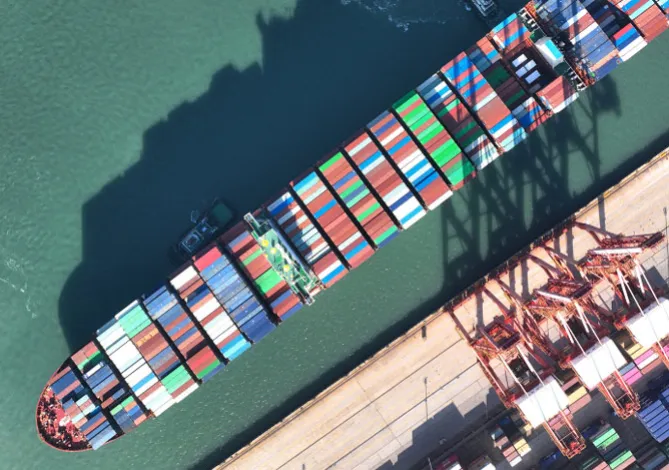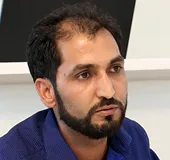
Harsher sanctions on Russia by the West following the breakout of the Russia-Ukraine war have prompted countries to reconsider and recalibrate their global supply chains and trade routes. The Middle Corridor, also known as the Trans-Caspian International Transport Route (TITR), is one such connectivity route that has acquired importance. TITR spans across Central Asia, the Caspian Sea, and the South Caucasus. With the primary objective of enhancing connectivity between Asia and Europe, the Middle Corridor provides a much-needed alternative and faster supply route than Russia’s Northern Corridor.
Regional collaboration in Eurasia
After Russia invaded Crimea in 2014, Central Asian and Caucasus nations collaborated amid geopolitical uncertainty to establish an independent multimodal transport route between China, Central Asia, Caspian, and Black Sea basins. In this regard, Kazakhstan, Azerbaijan, and Georgia signed TITR and set up a coordination committee for the Middle Corridor to develop and facilitate the infrastructure and trade along this route. The route comprises over 4,250 kilometres of rail lines and 500 kilometres of the seaway and is 2,000 kilometres shorter than Russia's Northern Corridor.
With the primary objective of enhancing connectivity between Asia and Europe, the Middle Corridor provides a much-needed alternative and faster supply route than Russia’s Northern Corridor.
In 2017, the 826-km Baku-Tbilisi-Kars railway line was inaugurated, achieving a significant component of the Middle Corridor connecting Azerbaijan, Georgia, and Türkiye. The transit train via this corridor from China reached Türkiye in 12 days and Prague in 18 days via the Marmaray. Between 2014 and 2021, 49,000 cargo trains transited along the Middle Corridor, registering an annual increase of 92.7 percent. In 2021, 15,183 container trains transported 1.464 million Twenty-foot Equivalent Units (TEU), marking a significant increase of 22.4 percent and 29 percent, respectively. Despite the substantial increase in cargo, the Middle Corridor only represented 4 percent of the volume and 5 percent of the value of EU-China trade. On the other hand, intraregional trade between Central Asia and the Caucasus region and Central Asia and Europe dominated the route.
Corridor gains interest amid Russia-Ukraine war
The sanctions imposed by the European Union (EU) and the United States (US) on Moscow following the Russia-Ukraine war in 2022 made many European shippers and transport operators to opt out of the Northern Corridor, lending momentum to the Middle Corridor. Consequently, data from October 2022 shows a 40-percent decrease in shipments between China and the EU along the Northern Corridor. The Middle Corridor became an ideal solution to sanction compliance and has enormously benefited from this shift after 2022.
Compared to 2021, container traffic along this corridor increased by 33 percent in 2022, and the regional countries have increased diplomatic engagement for improving infrastructure and other issues. In July 2023, Georgian Prime Minister Irakli Garibashvili visited Kazakhstan and Uzbekistan to establish a closer political relationship and improve infrastructure along this route. Azerbaijan, Georgia, and Kazakhstan signed documents to reduce congestion and develop corridor infrastructure in November 2022, followed by announcing a joint railway venture in June 2023.
The Middle Corridor became an ideal solution to sanction compliance and has enormously benefited from this shift after 2022.
Europe is pushing hard to enhance the Middle Corridor for its own geostrategic and geoeconomic interests, including diversifying sources for enhanced energy security. In July 2022, the EU signed a deal to purchase gas from the Caspian Sea through the Southern Gas Corridor. While the volume is not enough to replace Russian gas supplies, the agreement is still considered strategic. Subsequently, the route received significant attention from international finance institutions like the European Bank for Reconstruction and Development (EBRD), the Asian Development Bank (ADB), the World Bank, and the US Agency for International Development (USAID). Given the geostrategic and geoeconomic relevance of the corridor for Europe and Central Asia, the US has also shown support for “continued investment in and development” of the Middle Corridor and energy infrastructure.
China, on its part, has tried to synergise the Belt and Road Initiative (BRI) and Middle Corridor; however, the cooperation between the two projects remained limited as Beijing is not yet fully invested in its development. In 2015, during the G20 summit in Antalya, China and Türkiye tried to synergise BRI and Middle Corridor. Yet, many regional partners became sceptical of Beijing after the limited success of other regional projects. In April 2023, the Chinese ambassador to Georgia supported the Middle Corridor, and in July 2023, China and Georgia signed a strategic partnership to elevate collaboration in trade and strengthen the infrastructure of the Middle Corridor.
Opportunities for India
India pursues a constructive and strategic outreach with the hydrocarbon-rich and strategic Central Asia and Eurasia. The International North-South Transport Corridor (INSTC), a 7,200-km-long network of sea routes, roads, and railways connecting Saint Petersburg, Russia, with Mumbai, India, has made significant progress since 2002. Ratified by 13 countries, the INSTC has decreased transit time by 40 percent and freight cost by 30 percent compared to the Suez Canal route. However, INSTC got stalled due to harsher sanctions on Iran following the US withdrawal from the Joint Comprehensive Plan of Action (JCPOA) in 2018. However, with Western sanctions disrupting trade along the Northern corridor, INSTC has become crucial for Russia. In May 2023, Russia and Iran accelerated the construction of a crucial 164-km railway line connecting Rasht and Astara via Anzali of the Western Route of INSTC. With a US$1.4 billion interstate loan from Russia, the construction of the Rasht-Astara railway has gained momentum and will be completed in 2027. Additionally, the crucial 628-km-long Chabahar-Zahedan railway connecting strategic Chabahar port with the Iranian railway system and INSTC will be completed next year.
Ratified by 13 countries, the INSTC has decreased transit time by 40 percent and freight cost by 30 percent compared to the Suez Canal route.
As part of INSTC, India can use the Middle Corridor to facilitate access to the wider EU markets, the Caspian region, and Central Asia and beyond. Once the Rasth-Astara railway line is completed, the transit time along the Western Route of INSTC will be reduced to only 10 days from the current 25-30 days. The conventional 16,129 km-long sea route takes 45 days transit time. The Western Route of INSTC crosses the Middle Corridor in Azerbaijan, which will enable New Delhi to reach the markets of Europe and the broader Black Sea region in a shorter period via the Baku-Tbilisi-Batumi or the Baku-Tbilisi-Kars.
The Middle Corridor is an essential route for Central Asian countries which are keen to expand their trade with Europe to reduce their reliance on China and the associated geopolitical risks. With the support of the US and other like-minded nations, trade along the Middle Corridor is expected to triple by 2030. This will result in a 37-percent increase in trade between Azerbaijan, Georgia, and Kazakhstan and a 28-percent increase in trade between these countries and the EU. For India, convergence between the Middle Corridor and INSTC will reduce the risk of disruptions and help New Delhi increase its soft power influence over the region.
The Middle Corridor initiative presents great opportunities for countries such as Azerbaijan, Georgia, and the Central Asian Republics. It has the potential to create economic diversification, encourage regional integration, and foster stronger diplomatic relations. India can leverage its relationships with the region to form new cultural and economic partnerships in Eurasia, even amidst ongoing geopolitical challenges.
Ayjaz Wani is a Fellow with the Strategic Studies Programme at the Observer Research Foundation.
The views expressed above belong to the author(s). ORF research and analyses now available on Telegram! Click here to access our curated content — blogs, longforms and interviews.




 PREV
PREV


